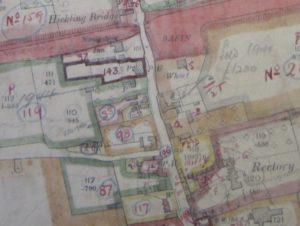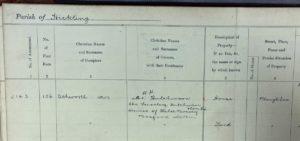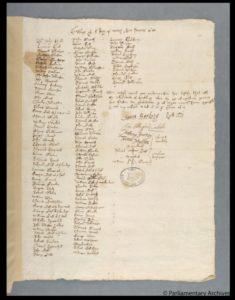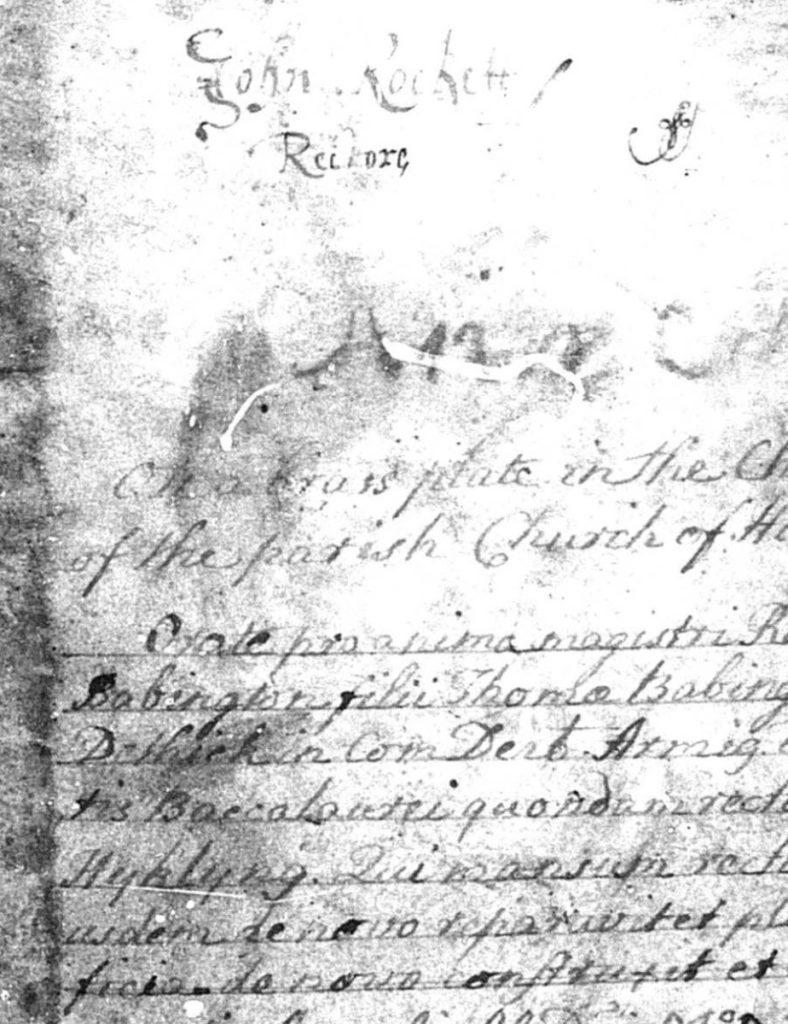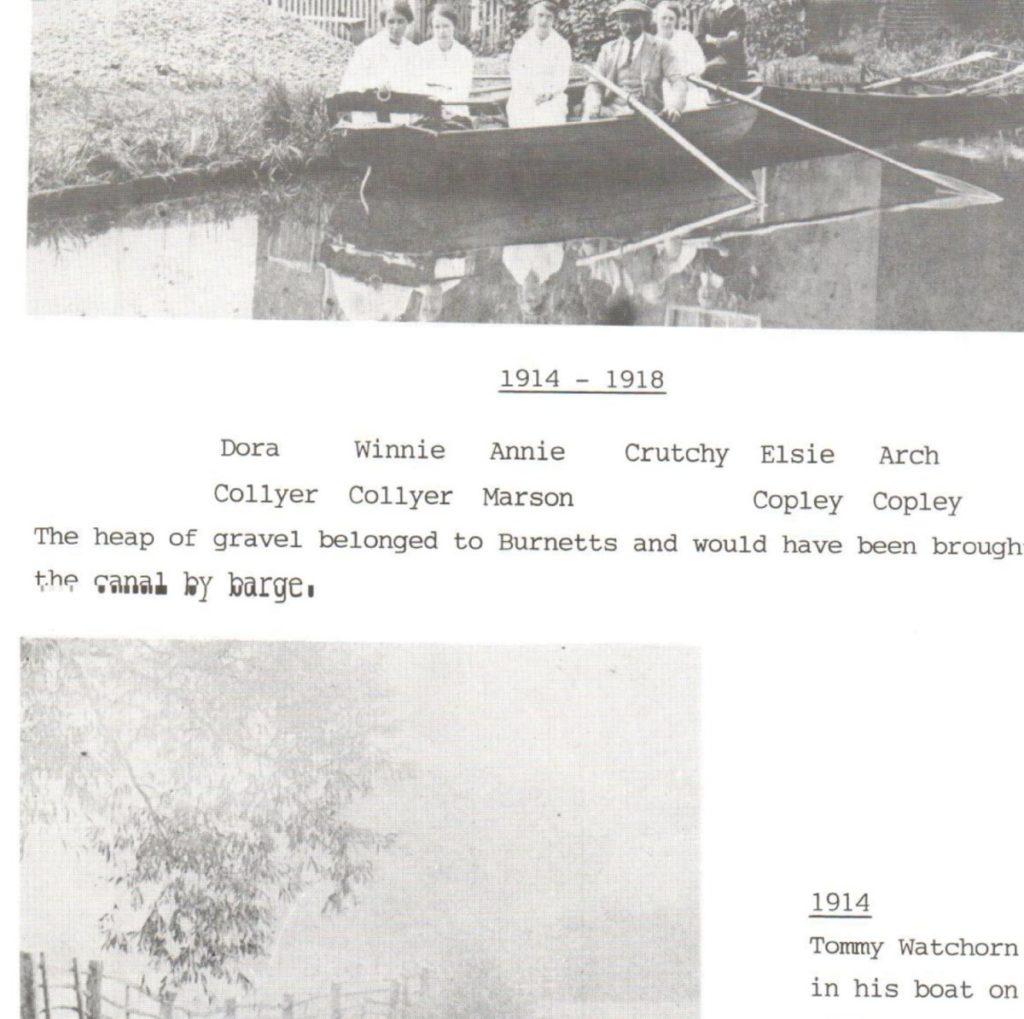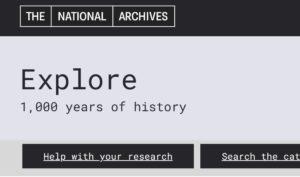Menu:
We hope to develop this page over time and would welcome your own tips and hints that might help us (and others) with researching village and family history.
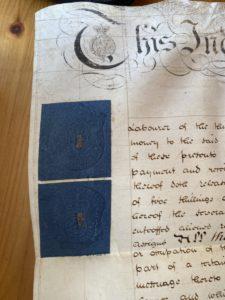
Please contact us, if you can add to it.
Some rules of thumb:
- Accuracy is the most important thing of all; proofread, check, double-check, triple-check.
- We always welcome corrections and amendments to our research; everyone gets it wrong sometimes.
- If you aren’t completely sure of your accuracy, the information is still useful but elements of uncertainty should be clear when you write-up your findings.
- We often use particular words and phrases to support this, for example; likely, almost certainly, possible, unknown, in need of clarification, no supporting documentation, possibilities include.
- Take plenty of notes: write everything down – you never know when a useful connection might emerge and you can save yourself a huge amount of time if your notes are extensive and well-organised.
- Don’t jump to conclusions: the names, the dates and the locations might seem to match and tell you the story that you were looking for, but you still need to check all around that information to be completely sure.
- For example; when researching the Marshall family in Hickling we had two separate couples, both named Samuel and Mary with similar ages. Only by cross-referencing census records and parish records could the various members of each family be reliably placed in their separate households.
- Reference everything: it is really important to know exactly where information, photos and anecdotes have come from – write down names, sources, dates – everything!
- Firstly, this allows you to give credit for the information you have sourced.
- Just as importantly, it gives you a map back to that source if you need to check anything.
- Lastly, it validates your research; the reader knows that you aren’t just guessing or making it up.
- Credits and Copyright: you should always give credit to other people’s work. There will often be legal copyright considerations but there is always the concept of ‘intellectual property’. When someone has worked hard to produce something that you have found useful you should give them credit by crediting their work.
- Give as much information as you can (book, author, publisher, website) but, if necessary, you can cite ‘source unknown’ – hopefully, someone will spot this and fill in the gaps for you at a later date.
- Beware of rabbit holes: research often draws you in lots of different directions and is full of distractions – before long you are lost in a rabbit warren of information and you have lost touch with where you were going.
- Try to keep focused on one specific area; be clear with yourself about your starting point and your final aims. If you come across an interesting distraction make a note of it and go back to it later.
- You will end up with lists and lists: make them as detailed as you can so that you can remember where you found the information and what your thoughts were at the time; this way you can pick up the train of thought later and follow the new lead.
- Brick walls: Most areas of research end up hitting a brick wall at some point – sadly, you just have to accept this, leave a gap and move on.
- Make it clear in your notes where the gap is and what you are still searching for – you may find something later that means you can come back to it.
- Think laterally; is there a different route to that piece of information that you haven’t tried yet?
- Work with other researchers; your answer may just be sitting in someone else’s notes – it’s always worth asking around.
- Try to think of your research as a jigsaw with pieces scattered all over the place and no picture on the box – it’s never a straight line.
- Try to be patient.
- Names & Spellings: spellings remained largely unfixed until the 1600s so that you will come across many variations for the same family/location; even after the 1600s spellings can be irregular – particularly if they depend on someone hearing and then writing down.
- Ancestor Quests; blogpost on names and spellings
- Dates & the Julian vs Gregorian Calendars: ‘Old’ style and ‘new’ style dates can cause considerable confusion. In 1752 we moved on to the Gregorian Calendar – before this, the year started on 25th of March (Lady Day) and ended the following 24th of March (in this way, March was the first month and February was the 12th month – September would have been the 7th month instead of the modern 9th month).
- Ancestor Quests; blogpost on dates and calendars
Transcribing.
Transcription is the foundation of a large proportion of the work that we do but it is a slow and time-consuming process – a mixture of fascination, patience and tedium. If you are able to help we would be happy to give you support and a bit of training.
Verb: transcribe = to make a copy of, especially in writing.
(Concise Oxford Dictionary)
Transcription is making an exact copy from the original source material; the transcriber should never guess or interpret – the aim is to produce a reliable version of the original in a more accessible format.
- Have you ever wondered what the [square brackets] on your computer keyboard are for?
- These go around gaps, words or phrases in a transcription where the original isn’t clear enough for an exact copy to be replicated; they show that something is missing […] or that an intelligent guess has been made at what the original wording was.
- They can also be used to contain an explanation; for example, [inkblot obscuring text].
- Square brackets make it clear that these are the words/markings of the transcriber and not the original writer.
Transcription vs Analysis.
- Step one: is to transcribe the exact words and markings of the original as closely as possible; square brackets are used to show any variation from the original text.
- Step two: is to interpret and/or analyse the text. This is a completely separate process and it is used to add meaning to the original text for the benefit of the reader/researcher.
- It is wise to complete the transcription before moving on to the analysis and interpretation (your understanding changes as you get further into the text) although you may find ideas emerging during transcription, so it is also sensible to jot down notes as you go along.
Types of transcription.
We are currently working on several types of documents – if you would like to help, please get in touch:
- Printed books: transcribing sections of printed books which link to the history of Hickling. Transcriptions into a computer file/format allow us to use sections of the text more flexibly, including adding excerpts to the relevant website pages. For example:
- Hazel Wadkin’s Scrapbooks of Hickling; these transcriptions are almost complete and are already proving useful.
- The Horseman by JH Marshall; the early chapters include some fascinating anecdotes about growing up in Hickling. (volunteer needed)
- Official Records: many of these date back several centuries – these are handwritten and can often be in a very poor state of repair: Parish Registers; Bishop’s Transcripts; Census Records; Electoral Rolls; Land Tax, Enclosure and Finance Act documents.
- Transcripts of these documents allow us to search and cross-reference more easily
- Transcription of the Protestation Returns is complete.
- Personal Records: as with official documents many of these are very old, damaged and difficult to read: Wills; Property Deeds; Correspondence.
- Such documents help us to fill in detail and to confirm possible connections – they often include valuable links between generations which help with searches of official documents or details of which families lived where in the village.
- We are privileged to have access to a huge collection of Will transcriptions courtesy of a local historian; these can be found in the Wills section of the website.
In this way, there are two distinct types of transcription:
- Transcription of old and/or handwritten documents which are difficult to read
- Transcription of typed or printed material into a more usable/searchable format.
Transcription Hints & Tips:
It takes time to get used to this work, but it does get easier the more you do!
- It is easiest to work on a computer using scans or photographs of original documents; this allows you to zoom in and out – to focus on difficult sections, for example. Alternatively, the old-fashioned magnifying glass works well.
- When working on a computer, the easiest way to work is to have the scan/image open on one side of the screen and a Word document on the other.
- It is useful to stick to the same lines as they appear in the original text and to number the lines; this helps you to keep your place in the transcription and makes it easier to go back later and/or to reference sections in your later research.
- An example of one set of house deeds which we have worked on is Hodson’s Yard; a skim through this may help to explain the process.
- Old documents are handwritten and sometimes it is necessary to tune in to an individual’s style; if a word or letter is illegible try to pick out where it occurs elsewhere in the document, if that is legible then it helps you to work out your problem section.
- Any bits which are unclear or illegible simply put square brackets round your best guess or […] if you’re leaving a gap.
- Sometimes things make sense once you’ve got further on and then you can go back to fill in the gaps. There is an awful lot of repetition in these documents which can be tedious but can also be very handy.
- When working on property deeds there is sometimes an Abstract of Titles which is a summary of property transactions up to that date; these help with context and can sometimes help to fill earlier gaps.
- An old legal dictionary and a Latin dictionary can also help; old documents often include words which we don’t recognise anymore but once identified they help enormously.
- If you think you have transcribed a word or phrase correctly but it doesn’t make sense to you; try copying and pasting it into a web browser. Often someone else has come across something similar and the definition/interpretation is available online.
- Look out for space fillers: they will often look like a squiggle ( ~ ) and usually appear at the end of a line. These sometimes look like illegible words but they have been put there deliberately to prevent anyone inserting extra detail into a legal document and altering its meaning …
Glossary:
An excellent glossary can be found on the University of Nottingham Manuscripts & Special Collections website: click here (for a pdf version – click here). This also includes a useful list of common legal Latin phrases.
A linked page also gives useful resources for further reading, including an online course in palaeography (handwriting) – click here.
| explanation | |
|---|---|
| ~ | A space-filling squiggle used to prevent anyone adding to the document |
| F | What looks like a capital ‘F’ in old documents is likely to be an ‘S’ (remember your Vicar of Dibley) |
| aliene | to transfer property to another (Mozley & Whiteley’s Law Dictionary). |
| atorn | to turn over feudal rights in law (Mozley & Whiteley’s Law Dictionary). |
| feoffment | the feudal mode of transferring estates of freehold in possession (out of use by the 1840s) (Mozley & Whiteley’s Law Dictionary). |
| livery of seisin/seizin | transfer (delivery) of possession |
| seizin | the feudal possession of a freehold estate in land (Mozley & Whiteley’s Law Dictionary). |
(glossary will be added to over time)
Web searches.
There are two main family history websites in the UK which, between them, cover most of the available search material (they are both subscription services):
- Ancestry
- Find My Past
- General web searches will bring up small local history groups like ours which can help you with local knowledge:
- For example; a recent search led to two references to the same individual, one was at the Workhouse, Nottingham Rd. Bingham and the other was at the Asylum, Bingham Rd. Nottingham;
- To someone unfamiliar to the area this looked like a simple mis-transcription and the assumption was that both records referred to the Bingham Workhouse;
- A bit of local knowledge separated them; two different institutions both on what is now the A52 between Nottingham and Bingham – the first was the Workhouse in Bingham and the second was the County Asylum at Saxondale;
- Thankfully opening up the research entirely.
Be aware of the pitfalls of internet searching, though:
- They are often brief and can lead to misdirection. Always check and double-check – especially, when following on-screen suggestions.
- Try to pin down more than one record for each new piece of information to check that they confirm each other.
- For example, a death record in 1875 could be narrowed down by the individual’s presence in the 1871 census and absence in the 1881 census.
- Then the presence of a probate record might confirm family members of the deceased which would also tie in with the census records.
- Internet searches are based on transcriptions which aren’t always accurate; if something you are expecting to find isn’t appearing, think laterally and try different routes/spellings etc.
- Searches from the main pages don’t bring up everything that could be relevant. It is worth delving deeper into the menu options and making specific searches; for example, census records or newspapers.
National Collections are hugely valuable sources:
- National Archives (also very useful for historical background and advice on searching and interpretation)
- Nottinghamshire Archives
- Leicestershire Archives
These all have online catalogues; some documents are available online but online catalogues aren’t complete and it is always worth contacting archives offices directly if you have a specific enquiry.
Newspapers:
Newspapers are a great source of detail and they often fill out stories and give an idea of locations, activities and even the character of places and people.
- Find My Past hold a significant newspaper archive
- https://www.britishnewspaperarchive.co.uk/ (subscription service)
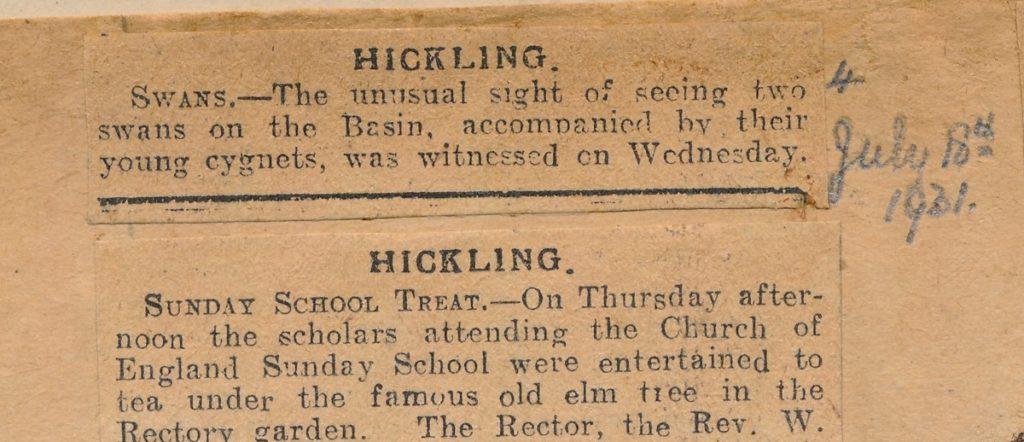
Overseas collections:
Families move all over the world as well as all over the country; a few useful websites for searches overseas can be found on our ‘From Hickling to the Other Side of the World’ page.
Lastly; sometimes you just have to talk to people and visit places – however, the internet can save a lot of legwork and can give you good starting points.
If at first you don’t succeed … by Michael Maskrey
Exploring records before 1837 and the problems of Latin:
PDF on this link; click here
More sections to follow!
Please contact us if you have questions or suggestions.

